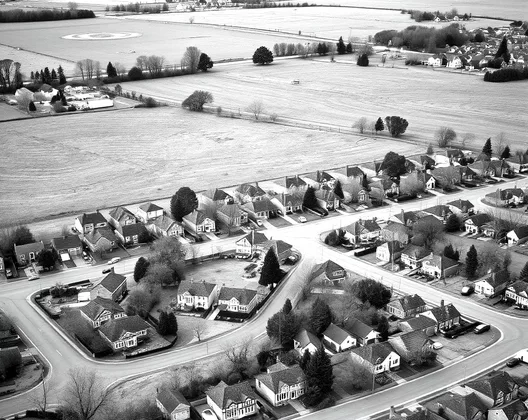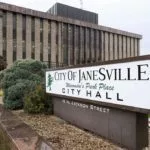| Big Radio News |
Two volunteer researchers learn that developers in many Rock County neighborhoods once prohibited home-ownership by anyone who was not white.
Janesville resident Katie Udell is researching the history of racially restrictive covenants in Rock County. She is a member of the county’s Diversity Action Team and Rock County’s Housing Authority.
Udell and her research partner, Rock County Board Supervisor and County Housing Authority member Bill Wilson, are using the county’s public deeds database for research. She says the aim is to assemble a digital map that shows which subdivisions in Rock County once had race-based deed restrictions.
“You can go on a GIS map and zoom into the specific subdivision or parcels to see where if you’re living has had this kind of discrimination,” Udell says.
Deed restrictions and protective covenants are commonplace in residential development, and they still exist. But contemporary federal fair housing laws do not allow any covenants that would restrict sale or lease of a home based on race.
Udell says the idea behind her research is eventually to give the public a clear-eyed statement on the history of racism in local housing in Rock County.
“I think it’d probably be easy to disregard this type of history by saying it did not happen here, and say ‘It only happened in other places, like bigger cities or the south,” Udell says. But there’s evidence of this happening across the nation, including in Rock County.”
Udell and Wilson have worked months identifying hundreds of housing subdivisions built in Rock County between the 1880s and the late 1960s — then doing a deep dive into the covenants originally drawn out for those subdivisions.
Wilson and Udell say they have found historical, race-based covenants in most Rock County cities, and in some of the towns, too.
One restriction shows up in deeds for General Motors’ Blackhawk Estates near the former Janesville auto assembly plant. It states homes in General Motors’ subdivision at the time were for sale to whites only.
Literally, the deed covenant reads: “No person of any race other than the Caucasian race shall use or occupy any building or any lot, except that this covenant shall not prevent occupancy by domestic servants of a different race domiciled with an owner or tenant.”
A 1948 Supreme Court ruling rendered racial covenants unenforceable, but the ruling did not stop developers from drawing up racial covenants as late as the mid-to-late 1960s.
Udell showed one race-based covenant put on a subdivision built in the town of Turtle in 1959.
Even though the subdivision was platted out almost a decade after the Supreme Court threw out racial covenants, the town of Turtle subdivision’s developer made one deed restriction very specific.
Udell says the restriction barred anyone who was Black from buying a house in the subdivision. Furthermore, the covenant said if anyone sold a house to a non-white person at any time, the property would automatically revert to the developer.
That means that if the owner was Black, they would have been told to vacate the property – although they still would have been required to pay for the house.
Wilson says he has come across some old deeds with race-based rules that seem written in “coded” language.
“They’re kind of ‘dog-whistle’ words – coded words that everybody knew at the time what they meant,” Wilson says.
He says some of the covenants used words to describe Black neighborhoods as “handy,” while they describe neighborhoods where white people lived with words such as “pristine” or “manicured.”
Udell and Wilson both say their purpose is not to rub past history of local racism in the faces of people who now live in the neighborhoods that once – decades ago – had race-based restrictions.
In fact, Wilson says many would be unaware their deeds have old, unusable, race-based rules embedded.
“This is not intending to be hitting somebody over the head and saying, ‘You’re a terrible person.’ It’s easy for us to say ‘Well, my relatives came here and they didn’t have slaves, so that old chapter of history is not my problem,” Wilson said. “Well, every time we get up to say the Pledge of Allegiance, the last words are ‘…and justice for all. That’s our responsibility.”
Rather, they said, the idea is to shed light on a period when housing could be denied to people based on their skin color or ethnicity.
Wilson says he sees some parallels between the old race-based covenants – and newer zoning designations for rental housing that the public might read as less desirable to have in or near neighborhoods dominated by single-family housing.
He says coded terms like “workforce housing” might give some an impression of a grittier rental demographic – but he says many workforce rentals built here are leased by people who earn between $80,000 and $100,000 a year.
“We’ve already done the Cabrini Greens and the Robert Taylor Homes kinds of high rises, and that is where we say our poor people live,” Wilson says. “Until we’re able to get a developer who is building a 12-plex and selling two of those units as ‘affordable’ for 20 years, and we help those developers make the math work, until we’re able to ‘integrate’ that, we’re basically still in hard times.”
Even if the old racial restrictions Udell and Wilson are unearthing are no longer enforceable, Udell says one nonprofit, JustDeeds.org, can help homeowners put a note in their deed that makes clear the current owner rejects any, and all race-based restrictions.
Udell says that will not reverse the old, unusable racial covenants. But it is a statement that homeowners recognize their home’s deed is a document as alive now as it was years ago, when racist language was encoded in it.
Udell has months more of research work ahead. She says anyone who’d like to help research local deeds can contact Diversity Action of Rock County.







